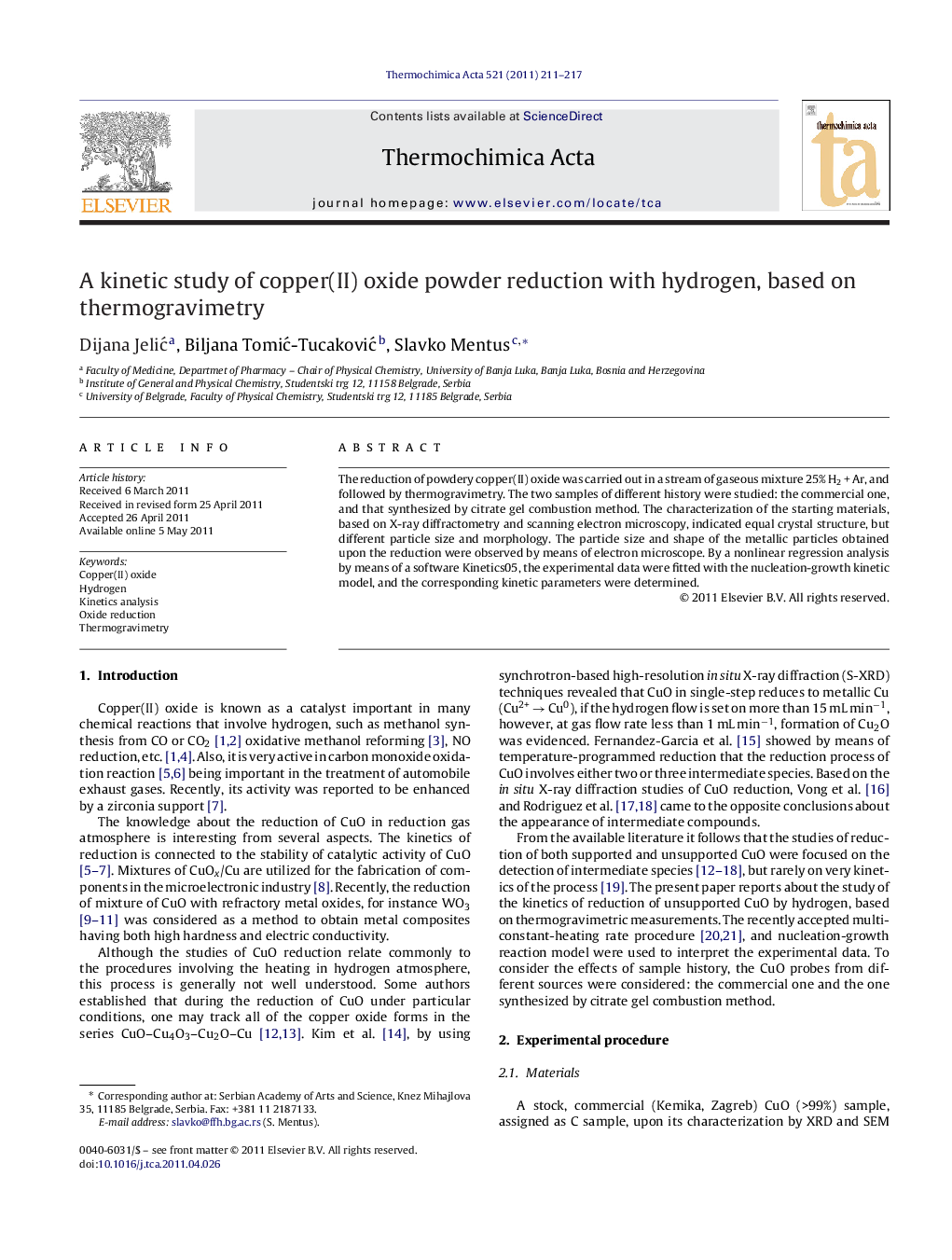| Article ID | Journal | Published Year | Pages | File Type |
|---|---|---|---|---|
| 674513 | Thermochimica Acta | 2011 | 7 Pages |
The reduction of powdery copper(II) oxide was carried out in a stream of gaseous mixture 25% H2 + Ar, and followed by thermogravimetry. The two samples of different history were studied: the commercial one, and that synthesized by citrate gel combustion method. The characterization of the starting materials, based on X-ray diffractometry and scanning electron microscopy, indicated equal crystal structure, but different particle size and morphology. The particle size and shape of the metallic particles obtained upon the reduction were observed by means of electron microscope. By a nonlinear regression analysis by means of a software Kinetics05, the experimental data were fitted with the nucleation-growth kinetic model, and the corresponding kinetic parameters were determined.
► The reduction of CuO by hydrogen was studied by thermogravimetry. ► The particle size of the samples varied inside the submicron range. ► The experimental data were fitted by means of a nucleation-growth model. ► The particle size influenced the kinetic parameters but not the reaction model.
